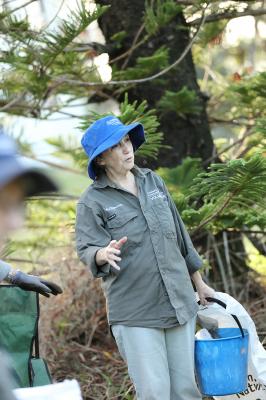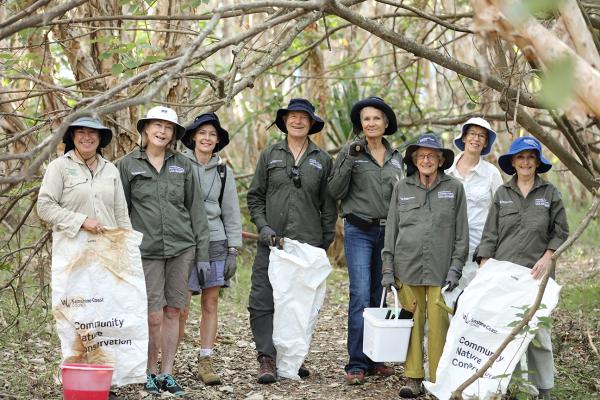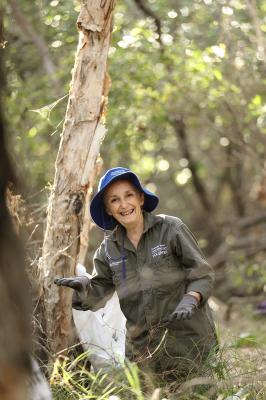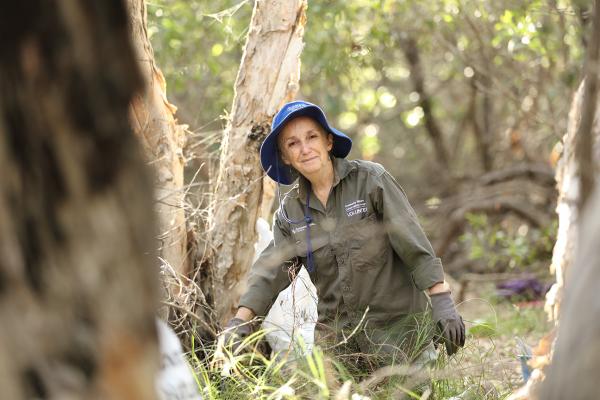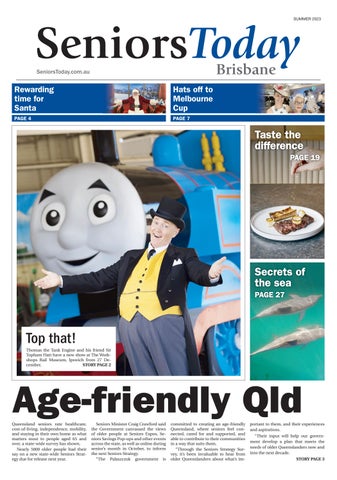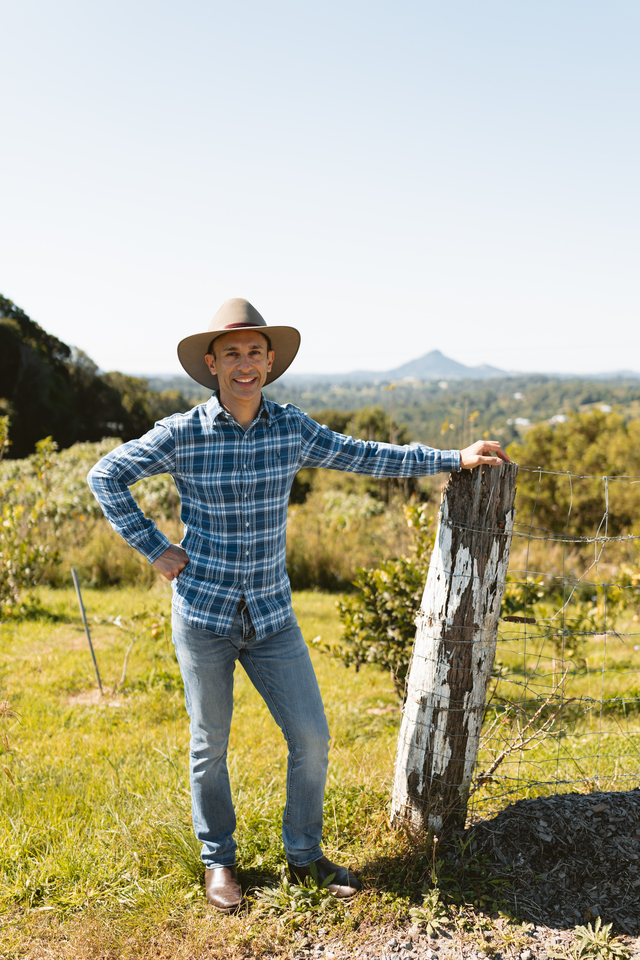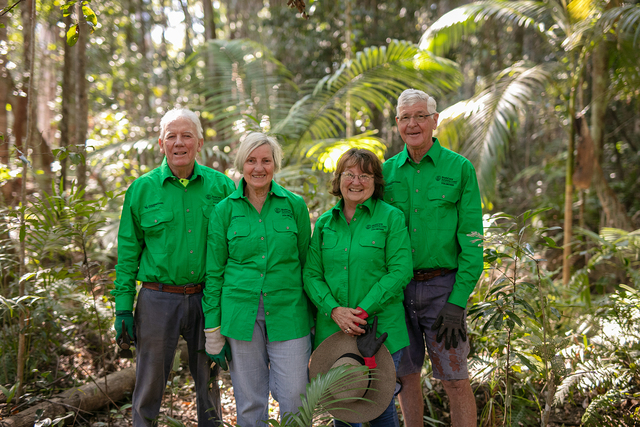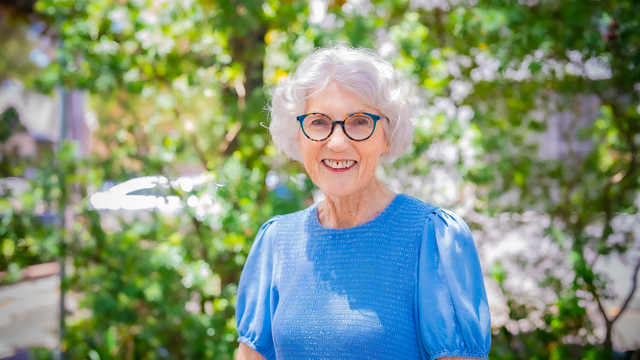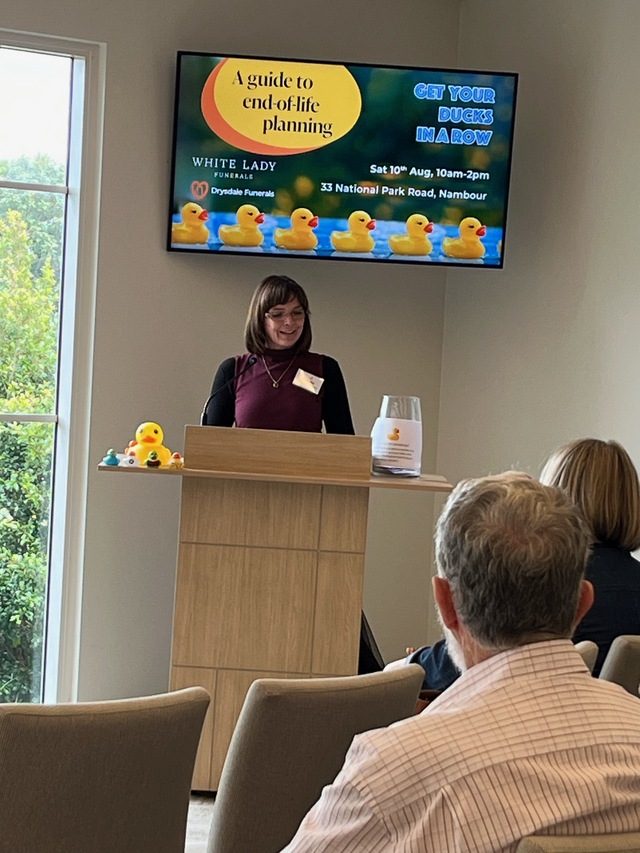A move back to the Sunshine Coast to look after elderly parents left Jude Crighton with a need to reconnect to the community and the natural world.
A love of science and the natural world saw Jude look to volunteer with BushCare groups around the area now year’s later she is involved in groups across the region.
“When I moved back to the Sunshine Coast I became involved in a group called Friends of Ben Bennett Botanical Park which is a park right in the heart of Caloundra and through that I met other volunteers it wasn’t a bushcare group it was more about educating – learning about the flora and fauna of that park and then educating others about it,” the dedicated volunteer said.
“I realised that most of the other members were members of the local branch of Wildlife Queensland so I joined them and they were volunteering in other bushcare groups.
“So I’m actually a member of three different bushcare groups in the Caloundra area – those are all supervised by Sunshine Coast Council staff. But I’m also in one run by National Parks staff up by Currimundi Lake in a reserve that’s named after one of the founders of wildlife Queensland – so one thing leads to another.”
Jude said it was her love of science that drove her interest in helping with bush regeneration.
“I did kind of study for a general science degree in my youth I was supposed to be a high school science teacher but that never actually eventuated,” she explained.
”If you’ve got a certain level of scientific understanding that makes you interested in identifying all the plants and animals and how they fit together.
“Really if your interested in looking after wildlife then you have to look after their habitat so they don’t come to grief, so they have somewhere safe to live and feed. It’s particularly true with one of our areas – the Shelly Beach Foreshore Dune Care Group because Shelly Beach is a very important nesting beach for Loggerhead turtles which are endangered so you need to look after the dunes to look after an endangered species.”
Spending innumerable hours a week each week – what does Jude feel she gets out of it?
“There is so much to learn – I find it fascinating but also you learn from other people who great experience as well and it’s good to be in a group with shared interests,” she said.
“The reason we moved back was to look after elderly parents in failing health, it’s a time of sadness but then to be able to get out into natural bushland it totally refreshes your mind. There is well documented evidence that time in green areas is very good for mental health.
“It’s also a case of realising that humans are not alone in this world and we do have a responsibility to look after other creatures.”
It’s important work and a lot of it wouldn’t get done without dedicated and interested volunteers like Jude.
“Yes because many levels of government are run like businesses this days and they need to put a monetary value on something and it is very difficult to put a monetary value on natural areas that’s why these programs are dependent on volunteers,” she said.
For Jude her favourite things about being a bushcare volunteer is just learning about how complicated these natural systems are in the company of like-minded people.
She has been volunteering for the past 10 years and depressingly a lot of the same battles are being fought that were being fought 50 years ago in trying to protect areas.
“One of the problems is that if you live in an area that doesn’t have good public transport there’s so much pressure to build new roads, normally planners look at a green bit on the map and think the road can go there we don’t have to resume someone’s property,” she explained.
“It’s just bush. Not realizing that other creatures do live there.
“With the pressure of increasing population it does put pressure on the remaining green areas because people are looking for somewhere to get away from crowded new developments and sometimes they don’t realise the damage they’re doing for example by going into sensitive areas on Mountain bikes and things like that and it’s very hard to criticize because people – they need that time out in fresh air and beautiful surroundings.
“There was a koala population in this area but the numbers have dived because they get hit by cars
“You do what you can. The more time you spend learning about the local eco systems and how they work you get to know what a natural landscape should look like and so many of us non-indigenous Australians have just got this cultural idea of what a European landscape looks like and there is this great urge to tidy things up where as wildlife actually like things to be messy because it gives them places to hide and forage.”
“You do want the next couple of generations to enjoy what we are able to enjoy growing up because the green places are being lost and a virtual experience is not the same as the real one.”
Our BushCare Sunshine Coast stats for 2020:
• 1,110+ volunteers
• Planted 11,674 native trees, shrubs and groundcovers
• 1,078 wheelie bins of weeds removed/composted.

